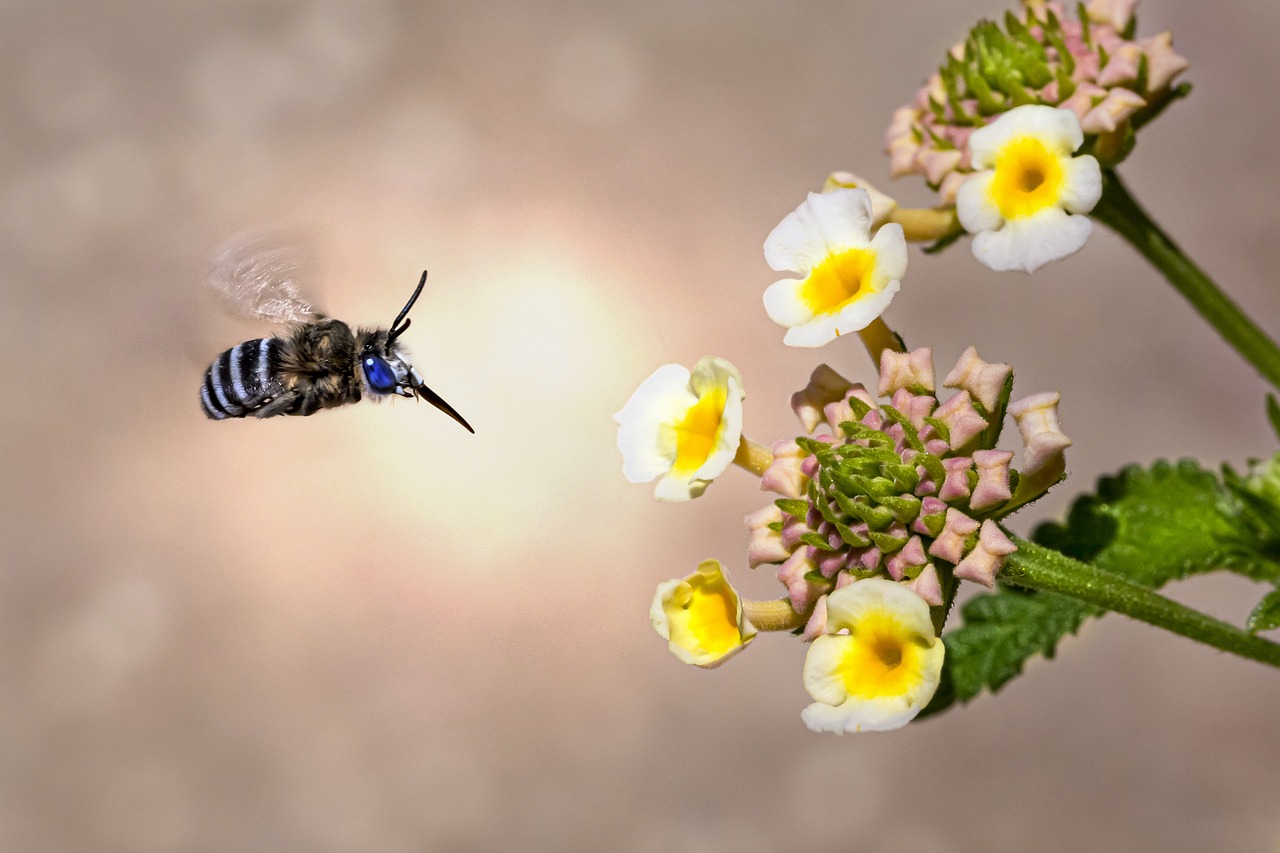The Urbane Digger Bee (Anthophora urbana) is a species of solitary bee known for its ground-nesting habits and significant role in pollination. Here’s an overview of this particular species:
Appearance
- Size: Anthophora urbana is a medium-sized bee, typically measuring between 12 and 15 millimeters in length.
- Coloration: These bees have a robust body with dense, dark hairs and lighter, often yellow or white, bands on the abdomen. The thorax is typically covered in pale hairs, giving a fuzzy appearance.
- Sexual Dimorphism: Males and females can be distinguished by their size and sometimes by the coloration of their facial hairs. Males may have more prominent, longer antennae.
Habitat
- Preferred Habitats: They thrive in a variety of environments including urban areas, gardens, meadows, and open fields. They favor areas with loose, sandy soil ideal for digging their nests.
- Geographic Range: Anthophora urbana is found primarily in North America, especially in the western United States. They are adapted to temperate climates and are often observed in areas with abundant floral resources.
Behavior
- Nesting: These bees are solitary. Each female constructs her own nest by digging tunnels in sandy or loose soil. The nests contain several brood cells where the female lays eggs and provisions them with a mixture of pollen and nectar.
- Foraging: Urbane digger bees are generalist foragers and visit a wide variety of flowering plants. They are effective pollinators for many wildflowers and crops.
- Activity Period: They are most active during the warmer months, from late spring through early autumn.
Interesting Facts
- Pollination: Anthophora urbana is an important pollinator for many plants, including both wild species and cultivated crops.
- Behavior: Despite being solitary, they may nest in aggregations where suitable nesting sites are available. This behavior is known as “gregarious nesting.”
- Lifespan: The adult bees have a relatively short lifespan, often living just a few weeks, which is typical for many solitary bee species.
Conservation Status
- Population: Currently, Anthophora urbana is not considered endangered. However, like many pollinators, they are susceptible to threats such as habitat loss, pesticide use, and climate change.
- Conservation Efforts: Promoting urban gardening with native plants, reducing pesticide use, and preserving natural habitats can help support their populations. Creating sandy patches or undisturbed areas can provide suitable nesting sites.
Identification Tips
- Coloration: Look for the distinctive light bands on their dark, robust bodies and the pale, fuzzy thorax.
- Behavior: Note their solitary nesting behavior in sandy soils and their active foraging on a variety of flowers.
- Flight Pattern: They are strong, fast fliers, often seen darting quickly between flowers.
Summary
The Urbane Digger Bee (Anthophora urbana) is a valuable pollinator in both natural and urban environments. Recognizable by its robust, banded appearance and solitary nesting habits, this bee plays a crucial role in the pollination of a wide range of plants. Conservation efforts aimed at protecting their habitats and providing nesting resources are essential for maintaining their populations and the ecological services they provide.
Visited 194 times, 19 visit(s) today
Views: 319
Subscribe to the newsletter:
